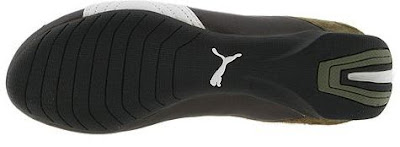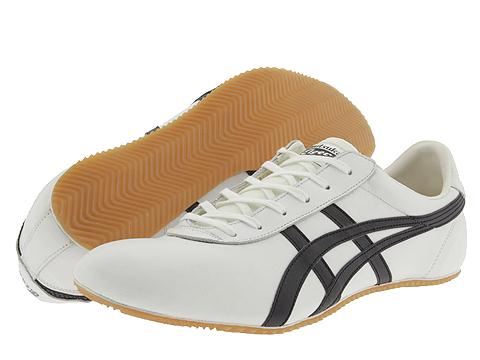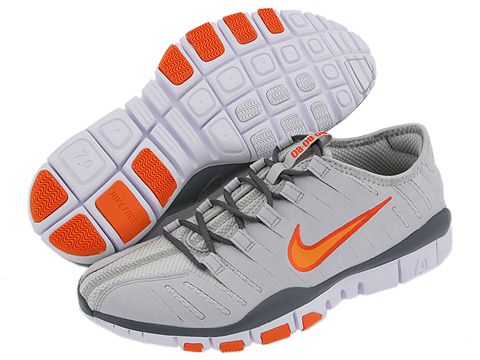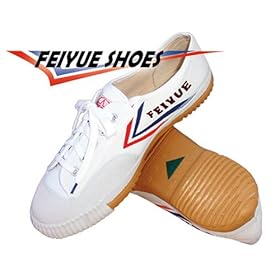Kick Your Shoes Off, Free your Feet, tell your nervous system you care
There's been a LOT of work in the past 4-5 years about new research in foot ware and care. Guess what? feet work. All by themselves.
Guess what else? shoes stop feet from working. That's a pretty global condemnation but it's true: with a handful of exceptions, modern shoes are based on 200 year old technology (the lasts of shoe design), and for the most part are way way way too restrictive to let our feet do their thing.
It's not just four inch heels or wing tips that are the problem: it's also flip flops and horror of horrors those gorgeous high tech trainers with designs to "correct" supination or too much pronation or heel strike or whatever. And just when you realize that that's as bad as putting the foot into a cast, we find that flip flops and Birkenstocks sandles are equally horrific for other reasons: toes have to claw onto the sandle to keep them on. Despite claims that such "foot muscle work" is good for you, it really isn't. The body doesn't keep our feet in flexion (toes curled) with every step we take when we walk barefoot. That means just about every shoe in my closet is for the chop.

Why? Our feet are one of the most jointed parts of our body (after the skull and the hands) and yet daily, what do we do? Lace up shoes to restrict those bones from doing what they were designed to do to support us: MOVE.
THere's a fantastic piece in the New York Magazine from earlier this year that describes most of the latest research and why shoes suck. Recommended reading.
One benefit of freeing the feet this article doesn't touch on is the relation of squished feet to the nervous system. We don't talk about the nervous system much, it's just sorta there, right? But here's the thing: the nervous system, as described by Eric Cobb, is hard wired to check only very few things. One of these, demonstrated in the startle reflex, is not fight or flight, but the very binary Threat or No Threat. "We're geared to optimize for survival, not performance," according to Cobb. Most of the nerves in our bodies designed to detect how we're moving in space are at the joints. Guess what happens in terms of that Threat/No Threat thing if our joints are squished and so not sending happy "we're free and moving" signals back to the rest of the system? Is that going to be interpretted as a Threat or a No Threat?
As Cobb demonstrates in his seminars, because we're totally connected systems, optimized for survival, if we get a message somewhere in our body that says there's a signal interruption, other parts of the body respond - and they respond immediately. In one demo, Cobb did a muscle test on a barefooted athlete to check for hamstring (back of the leg) strength. Rock solid. He then simply grabbed the athlete's foot, holding it snugly as in a laced shoe, and did the muscle test again. It was like those leg muscles got unplugged. Why?
This shut down response is part of the signaling process that says if there's something wrong somewhere, we your nervous system, don't want you exerting effort that could put you at further risk. Attend!
So above and beyond all the amazing stories about how shoes are bad for us biomechanically - because they get in the way of our own vastly superior biomechanics - they're also bad for us neurologically. Squished or non-mobile joints tell our body there's a problem. Every step we take with these immobilized joints sends that message "there's a problem; there's a problem: threat threat threat."
As most of us have experienced, if we don't attend to the quiet signals, our body has a way of sending messages out to get attention. And not necessarily at the site of the problem. Restricted feet lead to knee issues, or a hip issue or back issue, or shoulder ache or a jaw pain or maybe a wrist pain, to name a few hot spots.
What to Do?
If you want to love your body and you don't have time to do a work out today, try this: take your shoes off. Walk somewhere you feel safe to do so in your bare feet to let your feet move. You may want to probe a little further - are all those bones in your feet mobile?

I've asked some folks this and they've just laughed - like they have no idea. Well sports fans, we don't have flippers (tho shoes turn our feet into flippers); those joints are there for a reason . So let's take a look. There are some very simple things we can do to make our feet send happy talk back to the nervous system, and that will have a cascade of good effects for other body bits, too.
Toe Pulls
Toe pulls are one great way to get a few of the foot joints rolling. Take a look mid way down this t-nation article for a description by Cobb of how to do these. Shown below is the center toe pull:
The Middle Toe Pull: Begin in neutral stance, reach your leg behind your body, and curl the toes under with the knee in a neutral position. Use the knee and foot position to create a "stretching" mobilization just below the ankle in the target area pictured.
Once positioned correctly, perform five slow mini-squats (three to five inches) with the front leg. If you're doing this correctly, you should feel a strong stretching sensation in the target area.
 |
 |
| Target | Position |
Why more than take my shoes off? That's big enough isn't it?Yes, taking your shoes off is a great awesome first step, as it were. And if you're not somewhere it feels safe to go totally barefoot, you can get pretty close with a range of foot wear. Here's some options:
Puma Future Cats:

Vivo Barefoot (shown below)
 ** a note on sizing vivo barefoots, mentioned in the New York Magazine Wrecking Your Feet article above. In my limited experience with them, the web site sizing at Terra Plana.com, at least for women, is out of sync with what's in the box:i'd ordered a pair of what's on the web site as UK 7 EU 40's USA 9's only to receive shoes that were marked as UK 6.5's EU 40s. So, too small. So i asked for the UK 8's/EU 41's -
** a note on sizing vivo barefoots, mentioned in the New York Magazine Wrecking Your Feet article above. In my limited experience with them, the web site sizing at Terra Plana.com, at least for women, is out of sync with what's in the box:i'd ordered a pair of what's on the web site as UK 7 EU 40's USA 9's only to receive shoes that were marked as UK 6.5's EU 40s. So, too small. So i asked for the UK 8's/EU 41's - Again, these arrived marked as EU 41's BUT UK 7's/ US 9.5s on the label on the boot. They sure ain't what a US 9.5 is, and they seem like 40's at best to me.
SO - it seems that (a) vivo's for women only go up to a UK 7, and at that THEY ARE A SHORT 40, and (b) they seem to only go up by half not whole sizes (6.5 to a 7). Indeed, once upon a time (update: and now again after emails to them about this issue) it seems vivo's site owned that they were short shoes for their size: "Vivo Barefoot shoes are cut wide in the toe box but tend to run short." (just google for 'vivo barefoot fit') Here's an international sizing correspondences.You can see the vivo's true fit is off the grid.
The folks managing the online sales for terra plana, the footshopltd.co.uk, have been very good about handling the returns, and have said they have alerted the head office (theirs or terra plana's i'm not sure) about the web site/box size discrepencies, but i haven't seen a change on the site as yet. Indeed, they recently emailed me to say this is now a known problem but is unlikely to change until new stock is created in the spring. Again, the sizes on the current site have not been changed to reflect this. What's with that?
So if you're thinking of ordering, ask someone to confirm how they're labelled ON THE ACTUAL SHOE: only EU sizes show up on the box and the *actual* shoes seem to be one size smaller than what they are on the shoe label. Go by the UK size on the label on the shoe, NOT on the web site - that's a more accurate reflection of the shoe's size (again this is at least the case for women's boots; don't know about the men's lines). Quality control on this side of production seems confused at best. Props to footshopltd for their good customer service, but really really disappointed that a now known and acknowledged problem hasn't meant the web site sizes are updated appropriately
Asics Tiger Tai Chi
 Nike Free's (there's also the Nike Eclipse NM worth checking out)
Nike Free's (there's also the Nike Eclipse NM worth checking out)
and of course what barefoot-esque list would be complete without the remarkable Vibram Fivefingers (review on fit of all fivefingers models, with and without socks)

And these just in from Michael Scott at the Dragon Door Forum, are WuShu's

testing shoes for joint liberty wearability
These options are not exhaustive. Here's a simple test to see if the shoes you're interested in are joint freeing enough for work as better for your feet than what you've got on: twist 'em. If they can twist around the middle, give 'em a go. Now, i'll say this in passing, but there's a very expensive shoe on the market called MBT's - or Masai Barefoot Technology. They claim to be barefoot based and do all sorts of things for our muscles, but they're not and they don't. If you have questions, give them the twist test. They fail. Like alot. Nuff Said? Trust your feet.
Kathy Mauck of Z health talks about how the only part of the body we distrust this much is the feet that we brace it to such a degree. Why is that? Trust your feet! Ya, let's trust our feet.
The Path to Bare Pseudo Bare Feet
Getting to bare footedness can be a psychological as well as a physical challenge (for some its also a style challenge. alas) To this end, some folks rate the Nike Frees as a great transition shoe for going from regular shoes/trainers towards bare feet. The Tigers and Vivo's on the other hand have *much less* sole/cushioning so that you really do feel the ground beneath your feet. This is a GOOD thing. Our gate will adapt - back to normal. Trust our feet.
As you make the transition, initially, your feet will feel tired. That's ok. That just shows you how much your muscles and joints have been atrophying in your footwear. They'll come back such that not wearing these slippers will feel clonky and unnatural. As it should be.
Putting it Together: Towards Bare Feet and Increased Mobility
This article has stressed two things: first, if you can do nothing else for yourself today, kick your shoes off and think about how you can let your feet be a little freer. Let the joints designed to move, move. We know that when parts of our bodies go unused, our body stops talking to those parts: they get weak, atrophy, etc. and that joint death has costs. So let your feet go. There are even a few shoe suggestions to help the transition.
The second critical part of this article is to get a plan, stan, to work the joints of the feet through their complete range of motion. The Toe Pull is one example of a simple move designed to open one set of joints in the foot. There are others. I strongly recommend that you consider getting the R phase DVD or take a Z health class/workshop to learn how to move your feet and ankles (and every other joint in your body) through their full range of motion.
But if you do nothing else, start with your feet and kill your shoes - at least the non-twisty ones, or the ones with heels.
Do the toe pulls; make circles with your ankles; roll from the inside to the outside of the foot. You can even do all these things sitting down.
These instructions are way too generic because you really do want to make sure you're moving joints, not just stretching ligaments. But guaranteed that if you free and mobilize your feet, you'll feel better. There really will be a spring in your step, and that tells your body it can relax a little more: the threat level's down.